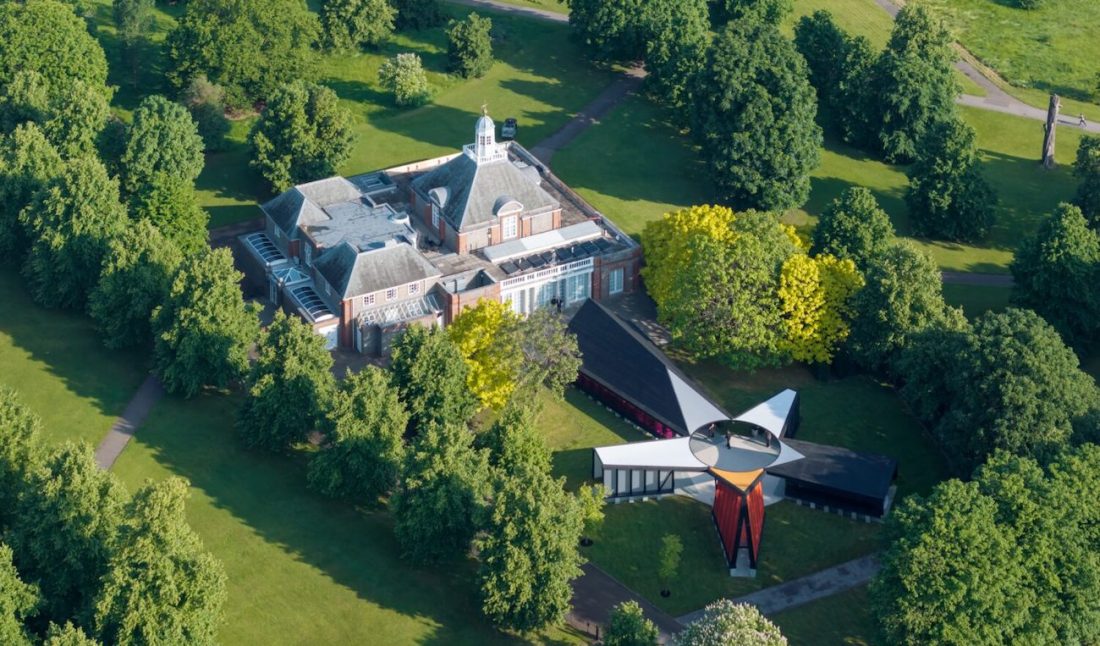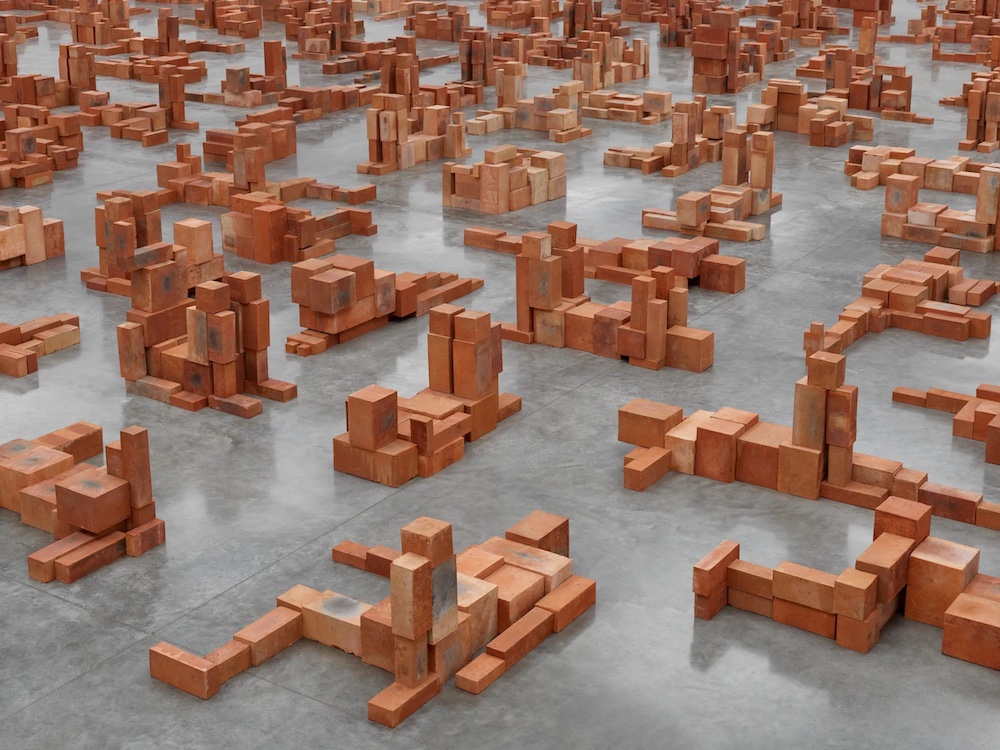The 2024 Serpentine Pavilion, “Archipelagic Void,” opens this summer, designed by Minsuk Cho of Mass Studies. From June 7 to October 27, the multi-space installation continues his study of public-centric projects that spark social engagement. For the Serpentine Pavilion’s twenty-third iteration, Cho imagined a site of five islands encircling open space. This central void, aimed to evoke hope, will act like a traditional Korean madang courtyard that hosts gatherings and activations year-round.
The 2024 Serpentine Pavilion
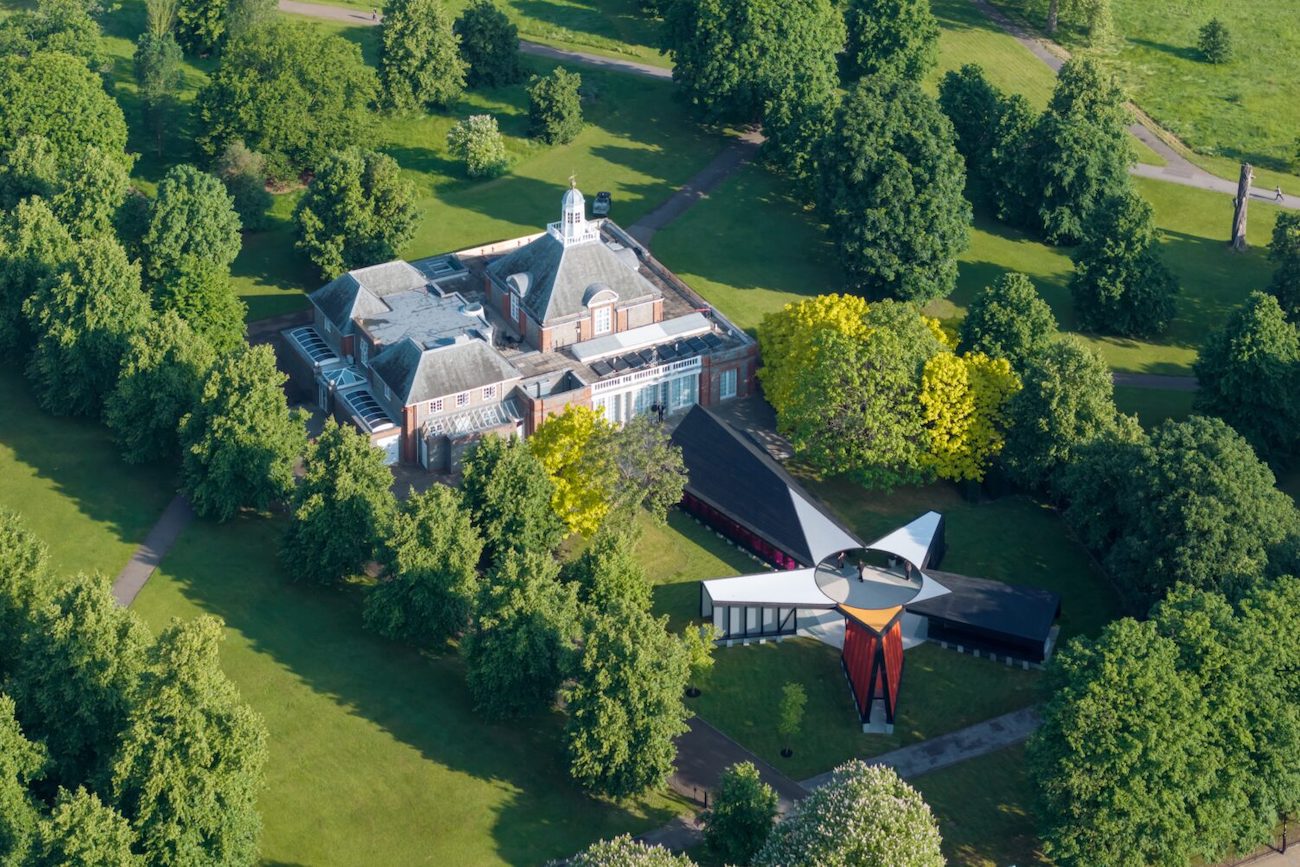 Serpentine Pavilion 2024, Archipelagic Void, designed by Minsuk Cho, Mass Studies © Mass Studies Photo: Iwan Baan, courtesy of Serpentine.
Serpentine Pavilion 2024, Archipelagic Void, designed by Minsuk Cho, Mass Studies © Mass Studies Photo: Iwan Baan, courtesy of Serpentine.
The five satellites consist of the Gallery, acting as a welcome center; the Auditorium, serving as a gathering space; the Library, featuring a calm respite; the Play Tower, hosting a netted structure; and the Tea House, honoring the Serpentine South building’s historic role as a tea pavilion with a reimagined Korean tea house. “Archipelagic Void” offers various paths for the visitor to venture.
Cho’s creative practice is centered on contributing to culture and society beyond the physical landscape. After studying architecture in Seoul and New York City, he worked for OMA in Rotterdam and later co-founded his first firm, Cho Slade Architecture, with his partner James Slade in New York. Just over 20 years ago, he returned to Seoul to open Mass Studies, where he has designed an array of projects including Pixel House (2003), the Korea Pavilion at the Shanghai Expo 2010, Space K Seoul Museum (2020), Won Buddhism Wonnam Temple (2022), and Pace Gallery Seoul (2023).
Minsuk Cho’s Latest Projects
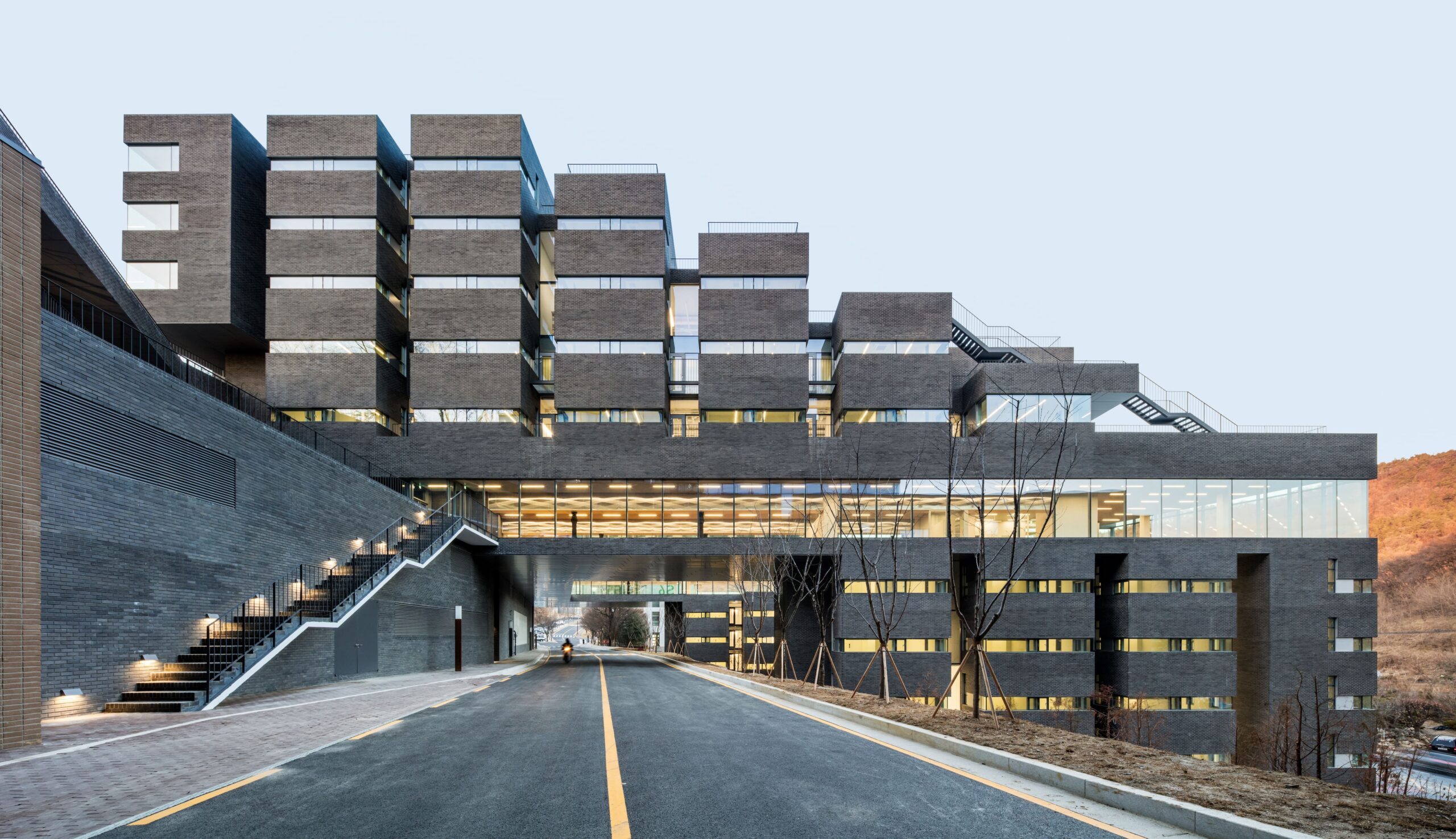 2018 Daejeon University Residential College, photo by Kyungsub Shin, courtesy of Minsuk Cho and Mass Studies.
2018 Daejeon University Residential College, photo by Kyungsub Shin, courtesy of Minsuk Cho and Mass Studies.
Under construction now in Seoul are a handful of other Mass Studies–designed projects, including the new Seoul Film Center (Montage 4:5), the Danginri Cultural Power Plant (Danginri Podium and Promenade), the Yang-dong District Main Street (Sowol Forest), and the Yeonhui Public Housing Complex.
From Seoul, Cho shared over a video call with Whitewall details behind his first U.K. structure, “Archipelagic Void,” and what dream project he’s still working toward ten years later.
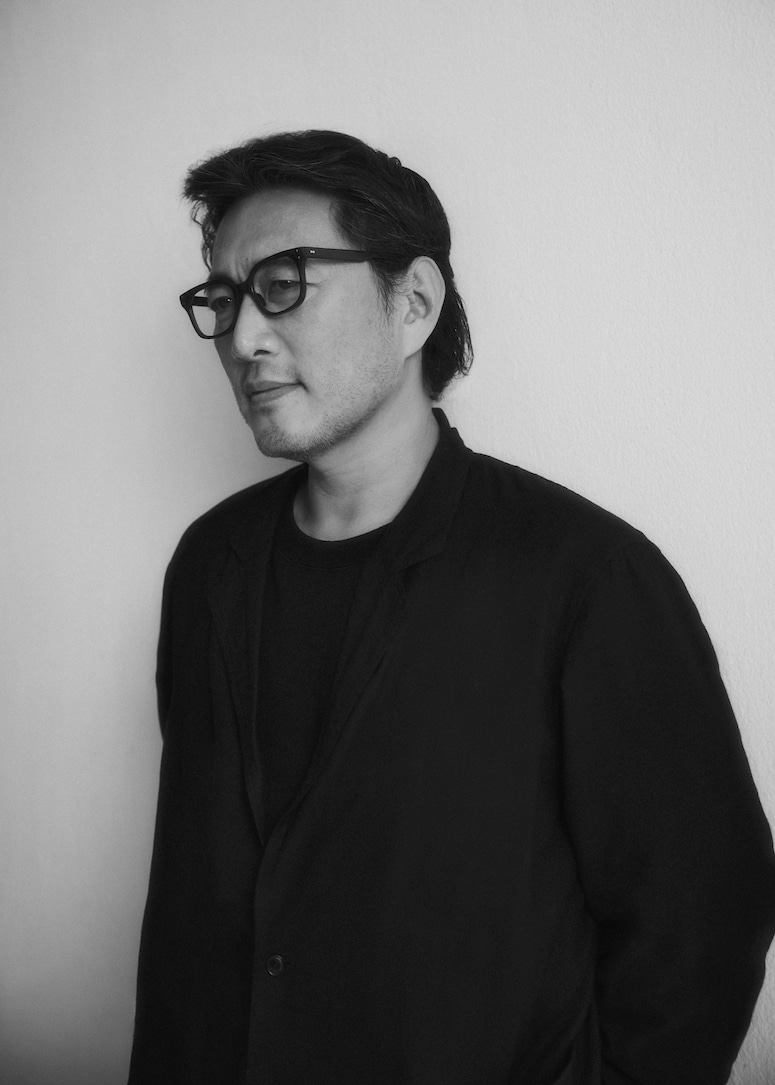 Minsuk Cho, portrait by Mok Jungwook, courtesy of Mass Studies.
Minsuk Cho, portrait by Mok Jungwook, courtesy of Mass Studies.
WHITEWALL: This summer, “Archipelagic Void” by your architectural firm Mass Studies opens at the Serpentine Pavilion. You began by asking what can be uncovered and added to the Serpentine site—after over 20 iterations have been seen there. What did you feel you uncovered or wanted to add?
MINSUK CHO: In architecture, as in everything, it’s the consequence of what has happened before. Architecture occupies space. Everything has a life span—even what we consider a permanent building. It also occupies time. The history of the Serpentine Pavilion is unique because I don’t think there’s anywhere in the world, maybe the Isa Shrine in Japan, that rebuilds as a ritual. It’s become this modern-day ritual of sorts. There’s this whole built-on narrative side that the brilliant architects and artists have been exploring. We were thinking about how to contribute, then we looked at the previous ones.
Inspiration From the Void
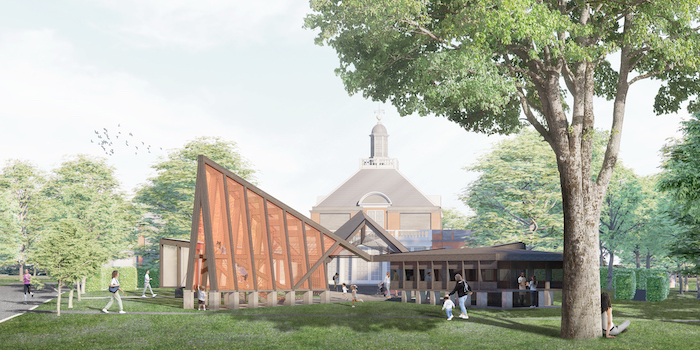 Serpentine Pavilion 2024, Archipelagic Void, designed by Minsuk Cho, Mass Studies © Mass Studies Photo: Iwan Baan, courtesy of Serpentine.
Serpentine Pavilion 2024, Archipelagic Void, designed by Minsuk Cho, Mass Studies © Mass Studies Photo: Iwan Baan, courtesy of Serpentine.
WW: Have you visited the site before? Did that impact your approach?
MC: I’ve only visited once, almost 20 years ago in 2005, for the Álvaro Siza and Eduardo Souto de Moura pavilion, which was brilliant. It was also on a rainy day, and I was all alone. Me and architecture. It was a very rainy, typical London moment, but it was interesting because it contrasted. Media portrayed this ecstatic moment—a bright, sunny day filled with people— and YouTube videos showed the opposite of that. It was a kind reminder of what architecture can do, and the full range of possibilities, especially at a public space. There can be a very quiet moment and a hyperactive, collective, exhilarating moment. It’s also a continuation of the history of Kensington Gardens, which has a very important history with the city of London and how it became a very civic, public space.
So, we wanted to give many choices, and that’s where this “archipelagic” idea came about. It’s not part of our script, but in a way, it can be compared to a traditional way of eating. We have everything everywhere all at once. It’s not a coursed meal, we don’t have a main dish on the table, but it’s a constellation of many things. Hot, cold, spicy, mild, old, fresh. Everyone can sit together but compose their own meal and choose their own courses. Here, we’re exploring how to be generous in a very particular way, and in our case, it’s about giving many choices to play with. The majority of it is completely geometric. A circle eight times, a rectangle six times, and then the rest is free form.
We thought the circle was exciting, but maybe we could invert it. We’ve been doing many of these circular domes and ways of organizing it, because when it’s almost an arena, there’s intimacy with varying degrees of enclosure with regards to the porosity. Our intuition was to create this empty void at the center.
Typically, a pavilion is about cleanness—a new world that you’re invited into where you’re uplifted. But for this, it seamlessly connects to the surroundings. For the five pavilions, we tried to make it as site-specific as possible. It’s not a blank slate, carte blanche. There are boundaries with the trees and the Serpentine South building. Each building, each island, has a dialogue with its surroundings. What we get at the end is five covered spaces that have very specific activities that can pick and choose from. As a result, you have void and five in-between spaces between these five wings.
Bringing People Together with Architecture
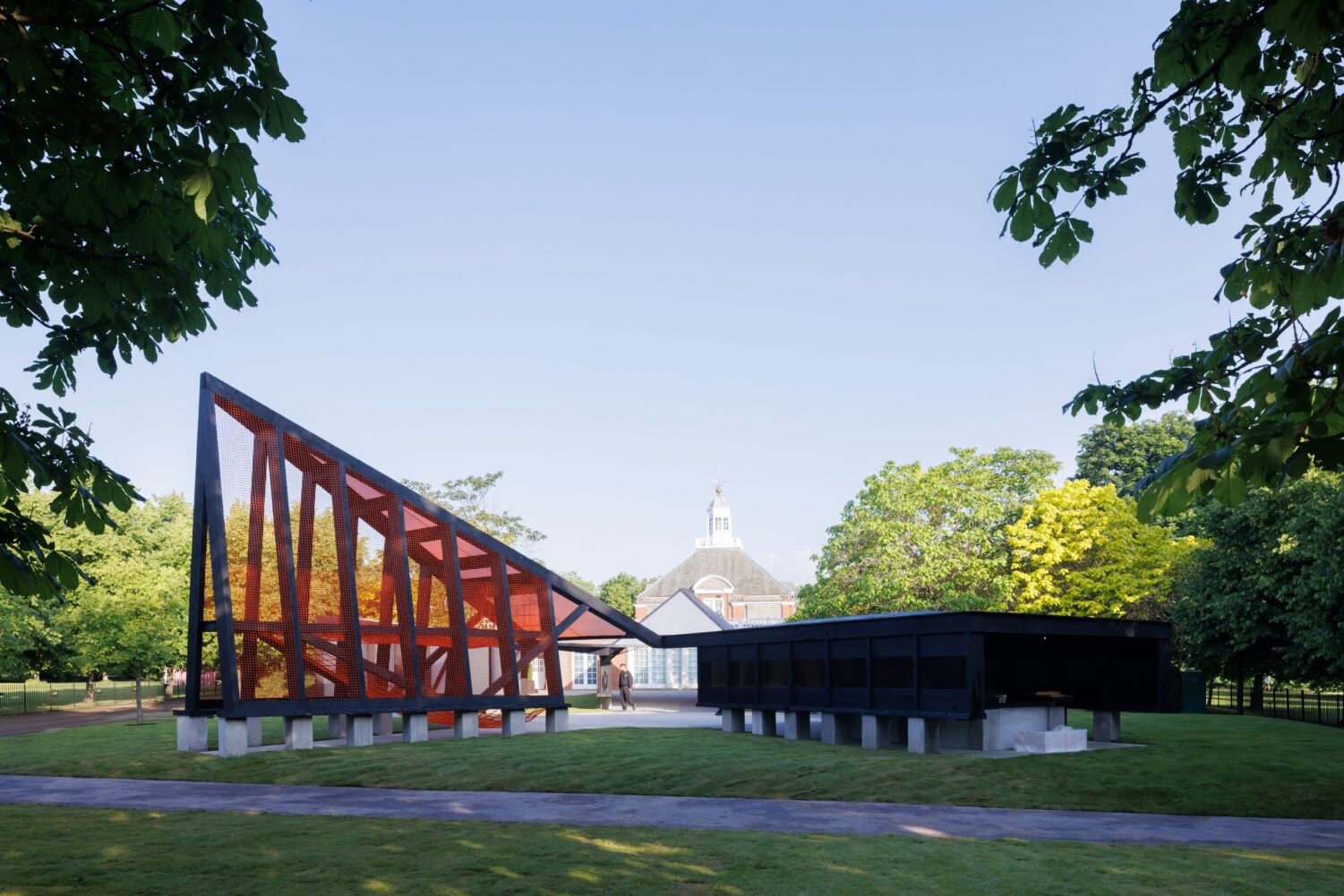 Serpentine Pavilion 2024, Archipelagic Void, designed by Minsuk Cho, Mass Studies © Mass Studies Photo: Iwan Baan, courtesy of Serpentine.
Serpentine Pavilion 2024, Archipelagic Void, designed by Minsuk Cho, Mass Studies © Mass Studies Photo: Iwan Baan, courtesy of Serpentine.
WW: “Archipelagic Void” shifts away from the architectural framing of a built center and explores it instead as an inverted void. This represents a departure from previous structures and proposes new possibilities and narratives, which is a futuristic way of thinking while still honoring the past. Why was this idea important?
MC: Multiplicity and oneness at the same time has been an important theme for us. Especially at this time, and in certain moments earlier in this century and in the beginning of my practice, new technology will allow us to unite and communicate freely, but then it becomes something else. There’s a compartmentalization of the world, and that’s why architecture has become more and more compelling. There is a way to bring different people with different backgrounds and heterogeneous conditions together and make them, not forcefully, interact in a gentle, civilized way.
Frederick Olmsted of Central Park mentioned a commonplace civilization, even though he was interested in what was happening with slavery in the South and he was skeptical of community, just like now—what was happening in that moment, beginning of this modern democratic America. But he had a hope for that, and in a way, this pastoral strategy became almost a theme park for people from other oppressed societies. It wasn’t this formal European park about showing the geometrical domination of human power. This is something I’ve been more and more interested in.
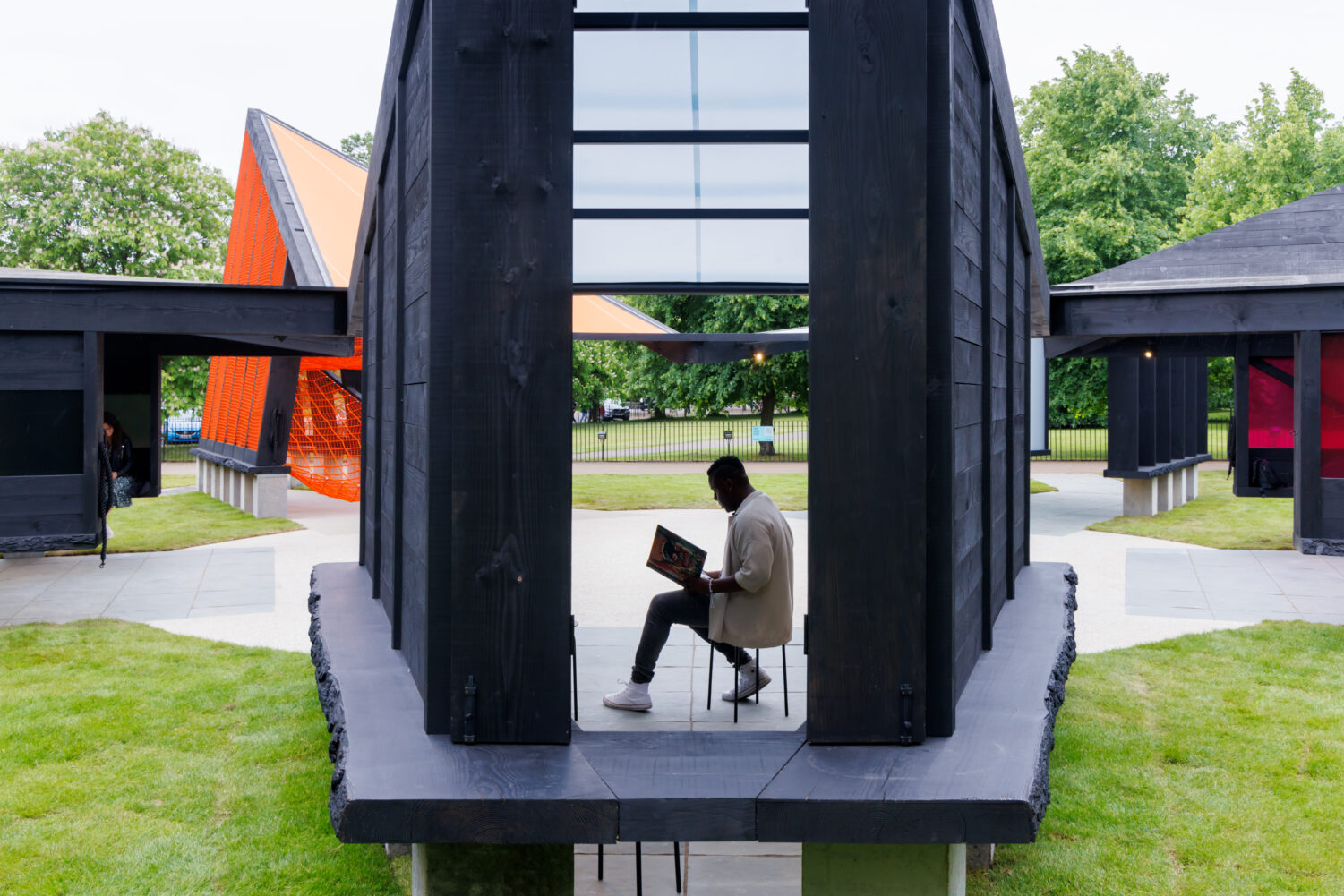 Serpentine Pavilion 2024, Archipelagic Void, designed by Minsuk Cho, Mass Studies © Mass Studies Photo: Iwan Baan, courtesy of Serpentine.
Serpentine Pavilion 2024, Archipelagic Void, designed by Minsuk Cho, Mass Studies © Mass Studies Photo: Iwan Baan, courtesy of Serpentine.
WW: The Tea House honors Serpentine South’s historical role as a tea pavilion. How did you explore the history of the site for your reimagined space?
MC: They wanted us to come up with a covered space for the rain—a semi- outdoor space for two hundred people to gather. Previously, it mostly served coffee. But as we looked into the history of the Serpentine Gallery south building, it was built as a tea house in 1934. And then it became a gallery and lost its function, and of course then there are other amenities around it in the park. I thought it would be interesting to bring that outside and serve coffee, but they weren’t very enthusiastic. [Laughs] I’m not so familiar with U.K. culture, but I kind of knew they’re known for tea drinking.
From 2010, our practice has been involved with a tea company in Korea. It’s a very interesting parallel with this pavilion. There’s a beautiful tea plantation since the seventies, which is on Jeju Island and their mission was exactly the same. Our culture is lost almost maybe because of the American influence with coffee, so they’ve been doing this in a very organic way. And they’ve been doing pavilions over the years, so that taught me how much you have to deal with specific, natural contexts. There’s an ecologist side, and the green field. There’s a sensitivity I’m trying to show at the Serpentine in a way—how we try and engage with the surroundings. We’re still working on it, but we’re thinking of bringing the company with us and running it there, showing a modern way of serving tea.
Ancient Principles, Modern Structures
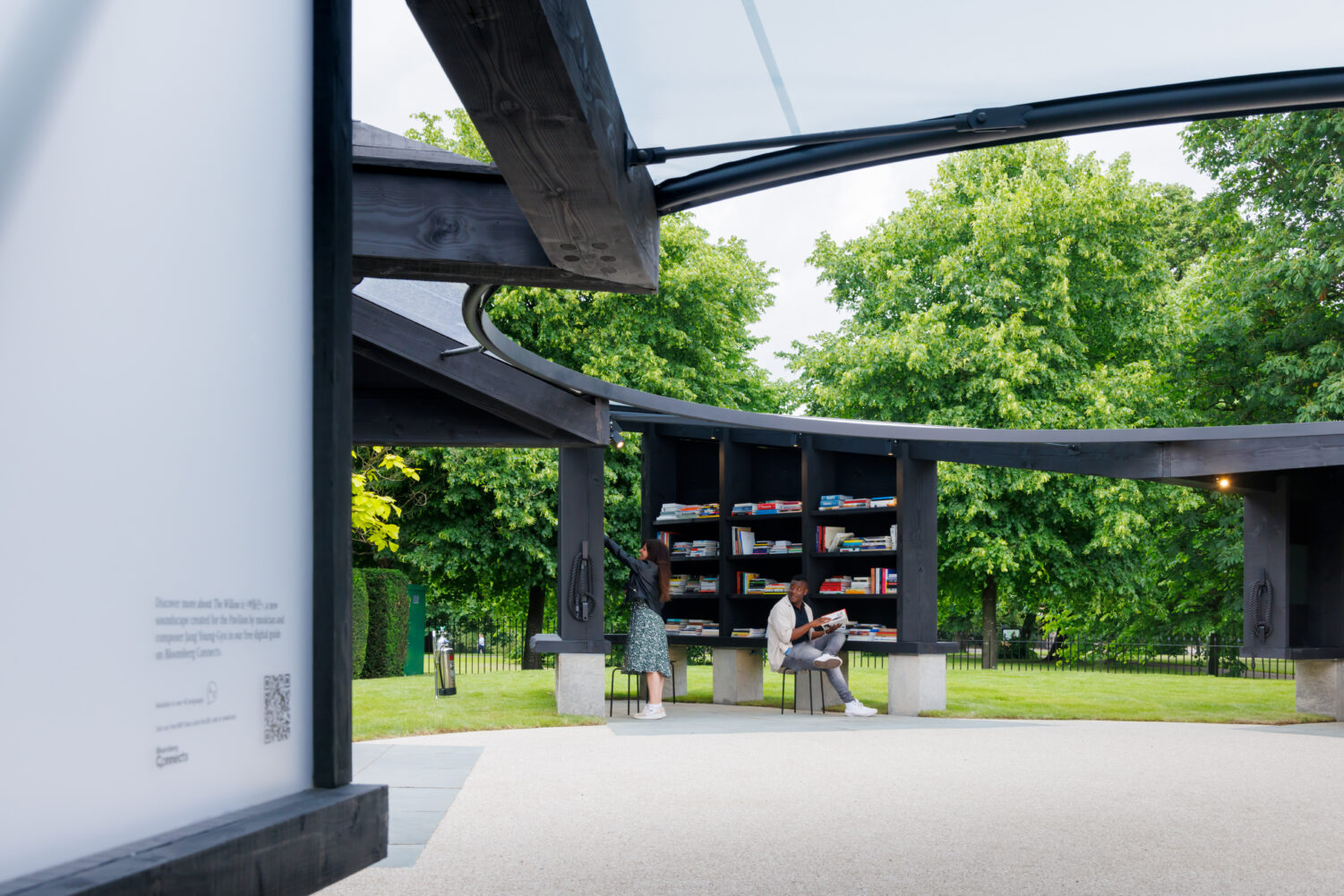 Serpentine Pavilion 2024, Archipelagic Void, designed by Minsuk Cho, Mass Studies © Mass Studies Photo: Iwan Baan, courtesy of Serpentine.
Serpentine Pavilion 2024, Archipelagic Void, designed by Minsuk Cho, Mass Studies © Mass Studies Photo: Iwan Baan, courtesy of Serpentine.
WW: You’ve said, “The aesthetic of the invisible brings us back to the aesthetic of the void and the infinite, which need not produce anguish, but hope. That could be the new ambition of architecture.” How does this void evoke hope?
MC: It goes back to Taoism—Laozi—and the famous scripture on the wheel analogy from the 4th century BC scripture, Tao Te Ching. It has two circles. Our circle touches the ground, and there’s an inner circle that’s empty that connects the spokes—30 of them. What makes the wheels move is the void at the center. It says, “Thirty spokes join at one hub; emptiness makes the cart useful.” I also looked back on the aniconism in Buddhism, when it became an organized religion, around the third century, and reflected on the many interpretations of emptiness throughout history and across different cultures. King Rashukha, who promoted Buddhism as redemption, at the very beginning, created the depiction of an empty throne—not the Buddha statue. Slowly, they created a person sitting in the middle, now well known as Buddha—something every temple has. It used to be that it was surrounded by all the trees and guardian animals, but there is an empty throne. It was beautiful in that sense.
Inspired by Madang
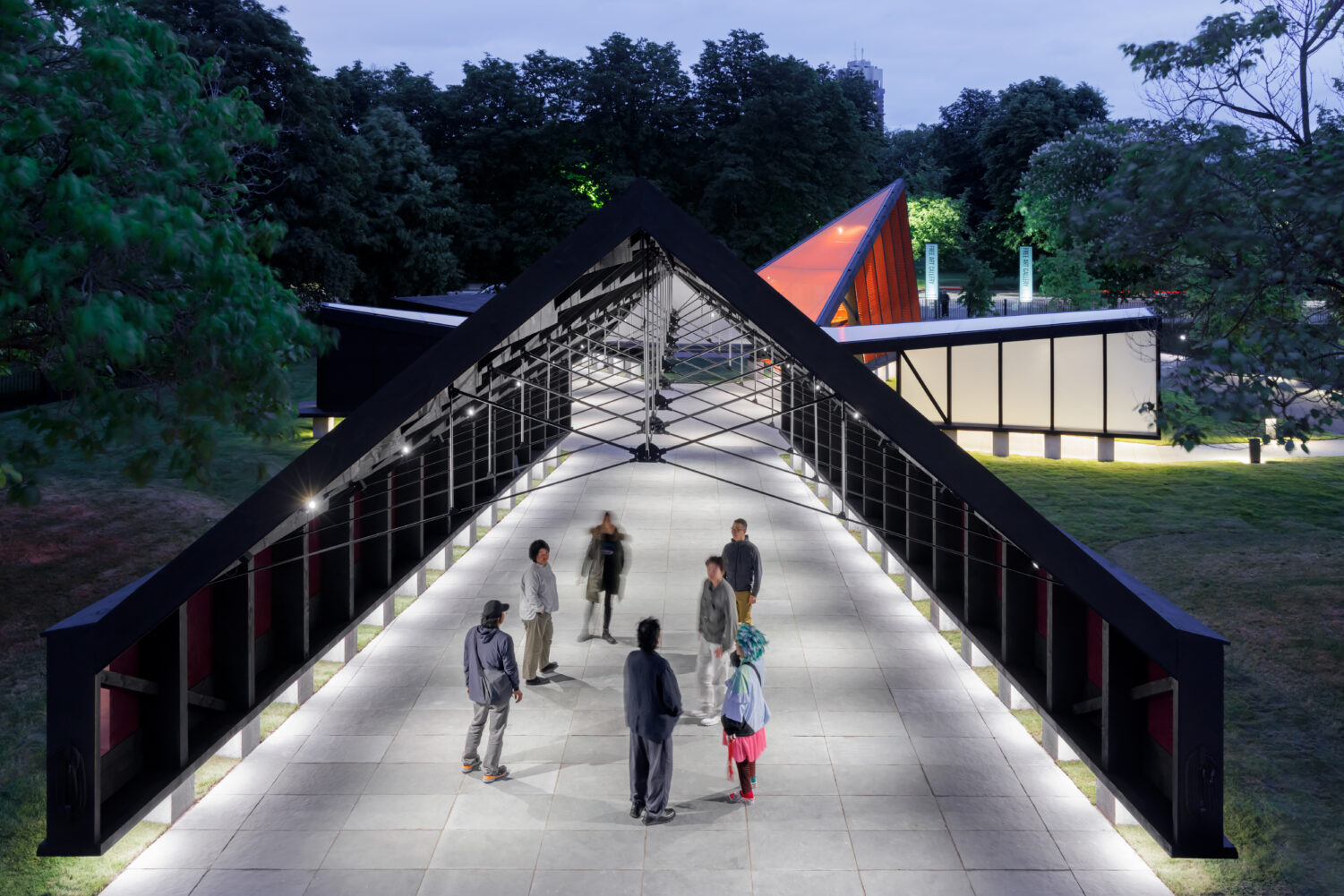 Serpentine Pavilion 2024, Archipelagic Void, designed by Minsuk Cho, Mass Studies © Mass Studies Photo: Iwan Baan, courtesy of Serpentine.
Serpentine Pavilion 2024, Archipelagic Void, designed by Minsuk Cho, Mass Studies © Mass Studies Photo: Iwan Baan, courtesy of Serpentine.
WW: The central void will act like the madang, a courtyard in old Korean homes that accommodates an array of activities—from everyday affairs to large collective events. What does your personal history with a space like this bring up?
MC: Madang is flexible and very pragmatic. It’s not an aesthetic one, with a rock garden or a sculpture like Peter Zumthor’s one, which I admired very much. In our void, it performs like a madang, a Korean courtyard. During fall, we harvest red chili pepper and dry it to make red chili pepper powder. Sometimes weddings happen. Sometimes there are extensions of a kitchen. In kimchi season, they make hundreds of cabbages there. It’s a pragmatic way, a ritual, from individual to collective. That’s what happens.
For the Serpentine Pavilion, we look at it like a lens—what lens does to light. It makes light converge, and it also inflects. It could be a destination to gather, like an arena for lectures and performances. But there are ten access ways—five islands that are open and then in between. So people will come from ten different directions and choose their way through. It’s not a pavilion that we can describe in one way. It’s the same meal table, where we generously prepare. It’s nothing forced, just a gentle suggestion. Five covered spaces, and six open spaces—eleven spaces that you can pick and choose from. We’re making wheels rotate.
Spaces Focused on Intimacy
 Serpentine Pavilion 2024, Archipelagic Void, designed by Minsuk Cho, Mass Studies © Mass Studies Photo: Iwan Baan, courtesy of Serpentine.
Serpentine Pavilion 2024, Archipelagic Void, designed by Minsuk Cho, Mass Studies © Mass Studies Photo: Iwan Baan, courtesy of Serpentine.
WW: How do you anticipate others feeling in this space?
MC: The nice thing about this Korean typology, the madang, is that even if you are four people, it can be rectangular, one-sided; L-shaped, more rich; or C-shaped, four-sided. And the nice thing about rich people is that they don’t make a McMadang out of it—a McMansion—but a series of intimate-scale madangs. What I also like about this is the material we use, timber, also has limitations. The palace is an exception, but mostly, you cannot build this huge madang. In our culture, modesty is embedded.
Madang is about intimacy. It doesn’t reveal everything to everybody. A lot of pavilions are like, “Wow!” You take your snapshot, and it becomes an experience you enjoy, and then you leave. In a way, architecture has become somewhat of a spectator—not really a genuine participant. Often, you have the, “Wow! Let’s take pictures.” And that’s become a big activity now. I imagine people to come and ask, “What is this? Oh, you can sit here.” On a sunny day, maybe you’ll look up at the sun and then tree, and see under the tree a building, and see people on the other side of the timber structure.
This traditional Korean architecture, madang, works in a similar way. There’s intimacy, but also a tactile quality to it. Old Korean houses barely have furniture in them. We sleep on the floor. There’s also always a stone plinth and a raise to keep away from the wetness. A timber structure starts, which becomes our seating and sleeping—with a futon or something to make it cushy. This pavilion offers a lot of that.
Architecture also mediates the human body and the topography. Serpentine Pavilion, many people don’t realize, has a subtle slope for the park to drain when it rains—almost a two-foot difference from one side to the other. We created a plinth at the same elevation height, and the auditorium has a very low bench for children, and it slowly grows. Both benches on each side become almost the height of a stool. When you cross the void to the tea house, it becomes the height of a bar. It’s an interesting perspective of people using the same planes, but in different ways with the body. We want to optimize the space and make the most of what’s given to us.
The ethos at Mass Studies
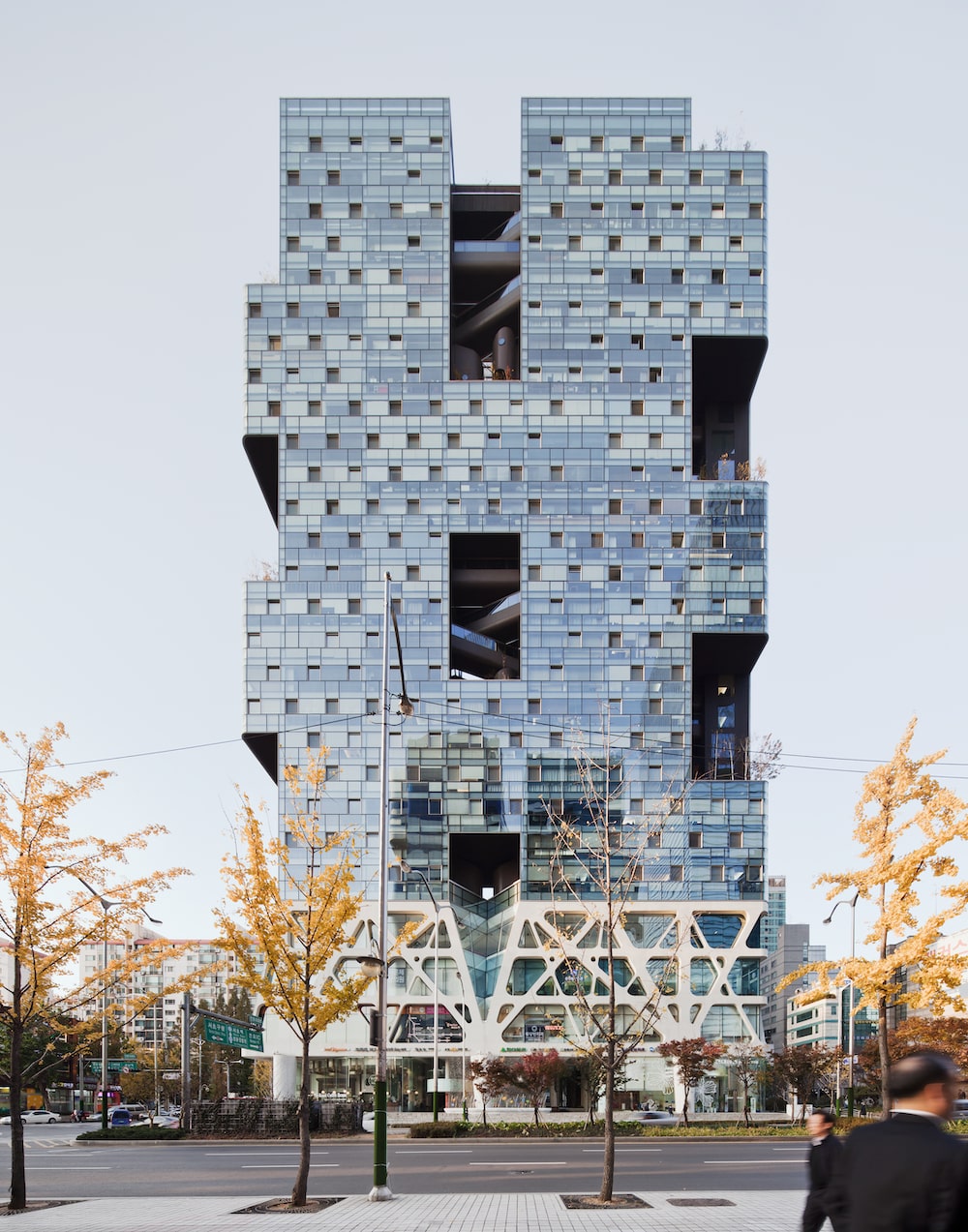 Missing Matrix (Boutique Monaco), 2008, photo by Kyungsub Shin, courtesy of Minsuk Cho and Mass Studies.
Missing Matrix (Boutique Monaco), 2008, photo by Kyungsub Shin, courtesy of Minsuk Cho and Mass Studies.
WW: Just over 20 years ago, you returned to Korea to open Mass Studies after studying and working in other countries, including the United States and the Netherlands. How would you describe how the architectural landscape has changed since you returned?
MC: I left Korea for New York to be a grad student in 1989, and my plan was never to go back. At the time, there was a military regime and it was a dictator era. It was a rough moment with demonstrations all the time. Close friends, very smart ones, were going to jail. Architecture was a passport to live somewhere else. I thought it would never change that much, but thankfully, somehow, my country was changing. The blossoming of contemporary culture owed a lot to the late 1990s—when Kim Dae-jung, the first democratic president in 1998, who got the Nobel Peace Prize, passed away, but he gave to us the freedom of expression, movies, and important books that were forbidden to read. Almost explosive things were happening.
When I came back to Korea, I was surprised and had to get used to it, because it wasn’t the country that I left. Architecture is interesting because the modernity of the 20th century almost became like Titanic. It sunk, and became another era, and created all this discourse. When I came back, there was another universe happening. Things were blown up and created faster. It was kind of scary, but at the same time, it was an exciting interpretation of mistranslations, maybe appropriated from what came from the West. It was quite amazing because I thought I’d come back to a quiet place and do my own little thing. It wasn’t a goal to be known outside, let’s say, because it was so exciting to be part of social change. It demands a lot of raw energy. The Korean film director—the one of Parasite—is of the same generation. It’s coming out of the age, of that milieu. In the last 20 years, he tried to produce socially engaging commentary, at the same time as us, but in entertainment. It resembles our compressed history. We have to move fast, so we’re practical.
After coming from the West, what I called this was two architecture camps, which are ever-more polarizing. Systemic and heterogeneous. One is about taking over the world, ninety-nine percent of the construction, they build so much and always in a very systematic way. They feel guilty and brave at the same time. The, “Whoops! Look what I’ve done. I’ve built a city!” And then heterogeneous. They’re very serious, follow discourse, sensitive, and very angry. They don’t get engaged much, but have a connection. It’s polarizing. It used to be ninety percent to ten percent, and now it’s ninety- nine percent to one percent.
I thought being guilty and angry is not very healthy to be an architect, but I can consider being brave and sensitive a practice. That’s what I call systematically heterogeneous, or heterogeneously systematic. It straddles the in-between. That’s been my approach.
We’re broadly interested, but we don’t want to be part of the redundancy of the machine. We can contribute to any genre. It could be a very big blockbuster architecture—which is dangerous, and we do less of—and we can do small things in a systemic way. It’s not a big project, yet it’s a big media focus. The siteless idea can also be applied. Small reactions to fragments.
I consider architecture like the Go game. It’s not black stone, white stone. Black is what we do and white is what the world does trying to win us over. It’s about the constellation we’re creating. But it’s always about looking to the past, and a few steps into the future, and trying to create a meaningful constellation. Maybe each architecture itself is not the goal, but how it contributes to larger relationships.
Building a Form of Social Engagement
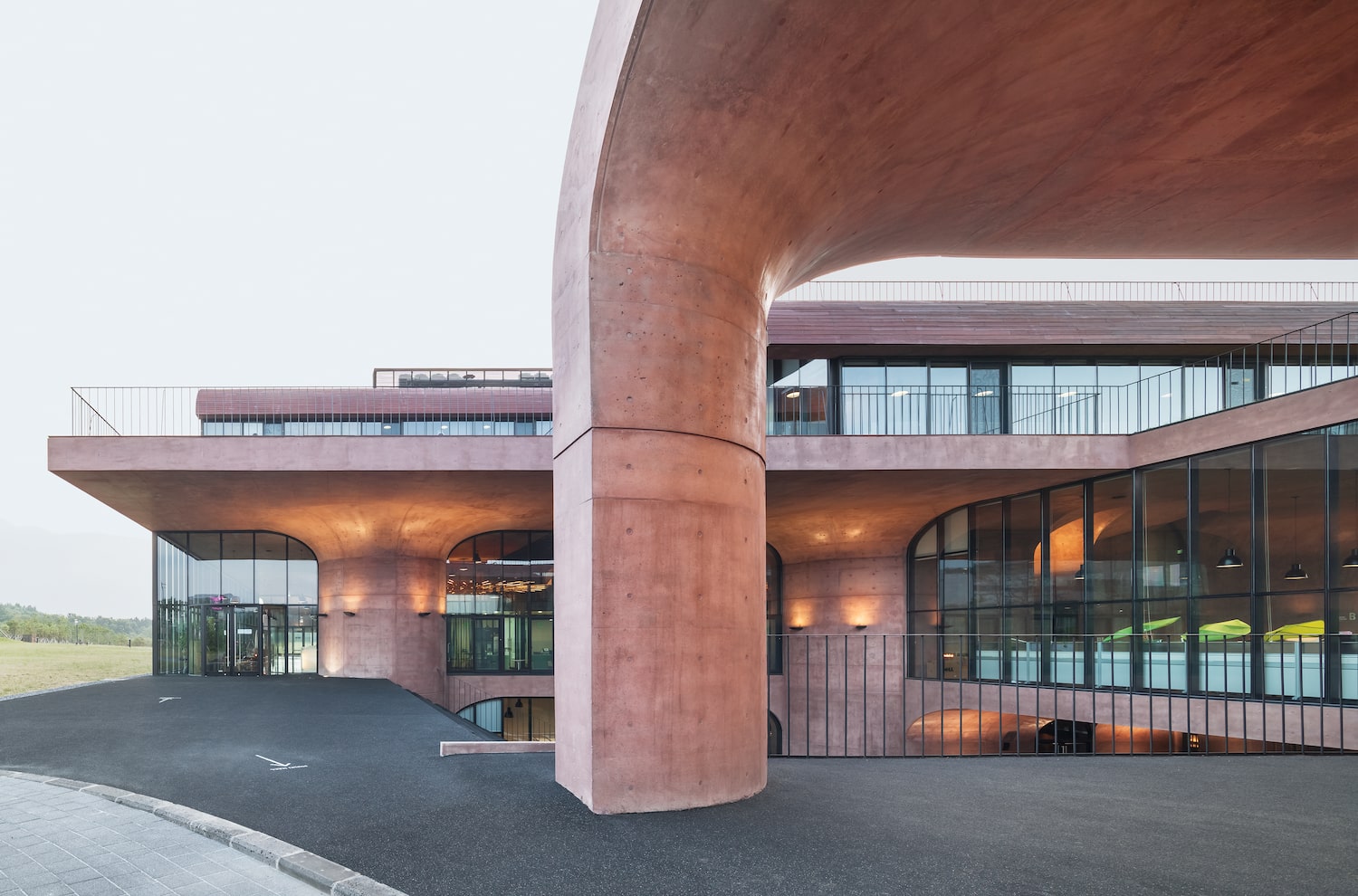 Daum Space, 2011, photo by Kyungsub Shin, courtesy of Minsuk Cho and Mass Studies.
Daum Space, 2011, photo by Kyungsub Shin, courtesy of Minsuk Cho and Mass Studies.
WW: Aside from contributing to culture, what do you feel all of the projects Mass Studies has produced have in common?
MC: Social engagement. I set out to be an architect to understand the world around me, other than myself. And engage with the world, if not contributing. The social intention has always been at the core of our practice. Even if we’re building a tower for developers, it’s always about the inventive way to organize these vertical matrixes to create more social possibility. The communicativeness and gregariousness.
Often, you have to bring new engagement to certain types of genres of architecture. You have to go against them, almost like a Trojan horse. It’s tough, but we didn’t lose that intention—connecting. More and more, we’re interested in the connection between the people, and taking down the wall to be part of the urban fabric. And we’re interested in the connection with other narratives: people, space, and time.
Korea has offered interesting projects, like a new city from reclaimed land. There’s a known history, so it is a layered moment in history. That’s relevant for Korea because it’s fast growing, but also fast shrinking. Depopulation is crazy. This is the least fertile country and the first country that will probably go extinct early. Don’t get too excited! [Laughs] We are very modern, and there are good things and malaise that comes with it. We are the guinea pig.
Minsuk Cho’s Dream Project
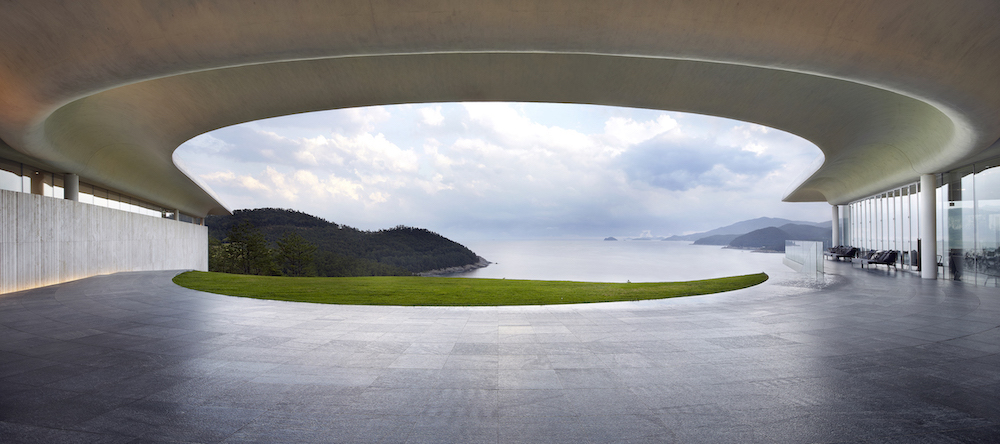 Southcape Spa & Suite-Clubhouse, 2013, photo by Yong-Kwan Kim, courtesy of Minsuk Cho and Mass Studies.
Southcape Spa & Suite-Clubhouse, 2013, photo by Yong-Kwan Kim, courtesy of Minsuk Cho and Mass Studies.
WW: Do you have a dream project? Something you’ve not yet created but would like to?
MC: The DMZ—the demilitarized zone. It’s left over from the tragic 20th-century geopolitical conflict on the Korean Peninsula between North and South. It’s a no-man’s land and nature preserve that’s four kilometers wide and about three hundred kilometers long. The demarcation line is only a ten-meter difference and falls in the valley, crossing with tunnels we discovered. You can’t access it from both sides.
So, almost a decade ago, we proposed to start a seed bank and appropriate the tunnel. The artist Jae-Eun Choi initiated a project named “Dreaming of Earth”—and part of it was a commission for the design of a seed bank and data vault named DMZ Vault of Life and Knowledge. Rather than erecting new structures, this repurposes one of the existing incursion tunnels manually excavated by the North Koreans across the Military Demarcation Line and discovered by the South in the mid-1970s. It preserves the ecology of the DMZ and transforms past aggressions into a healing suture across the region to inspire a collaborative effort between the North and South in the safe keeping of mankind’s treasures.
One side would be like a written ecology library because there’s a protection of life by the seeds—the biodiversity, which is very important. This territory is very important because it was untouched by humans and now there are two thousand species and more than a hundred endangered species. So it would be great to have this collaboration with the North and South, taking the politics out of it. All the digital knowledge becomes evaporative, so this is like the microprint. A Rosetta Stone for the 21st century—the selection is very important. All this ecological knowledge that can be in one site and extend from a tragic point. And all the seeds will be preserved in there. It would be a beautiful thing.
It’s kind of a silly dream, but a longtime goal for me. It can bring people together.
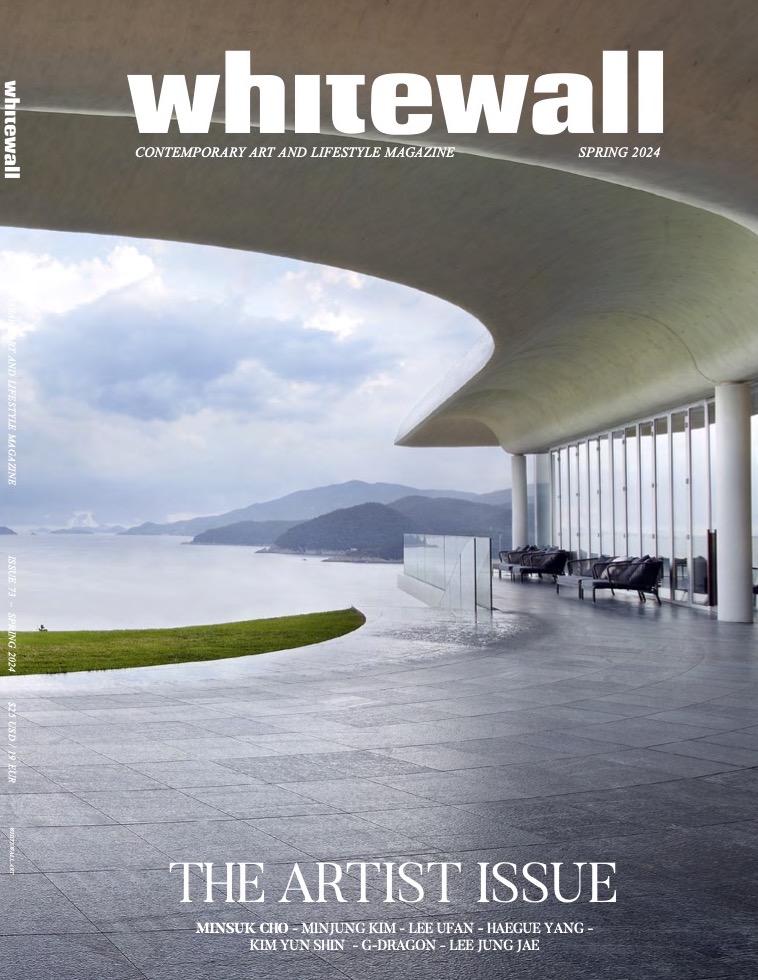 Whitewall’s Spring 2024 issue featuring Minsuk Cho’s digital cover, Southcape Spa & Suite-Clubhouse, 2013, photo by Yong-Kwan Kim, courtesy of Minsuk Cho and Mass Studies.
Whitewall’s Spring 2024 issue featuring Minsuk Cho’s digital cover, Southcape Spa & Suite-Clubhouse, 2013, photo by Yong-Kwan Kim, courtesy of Minsuk Cho and Mass Studies.







